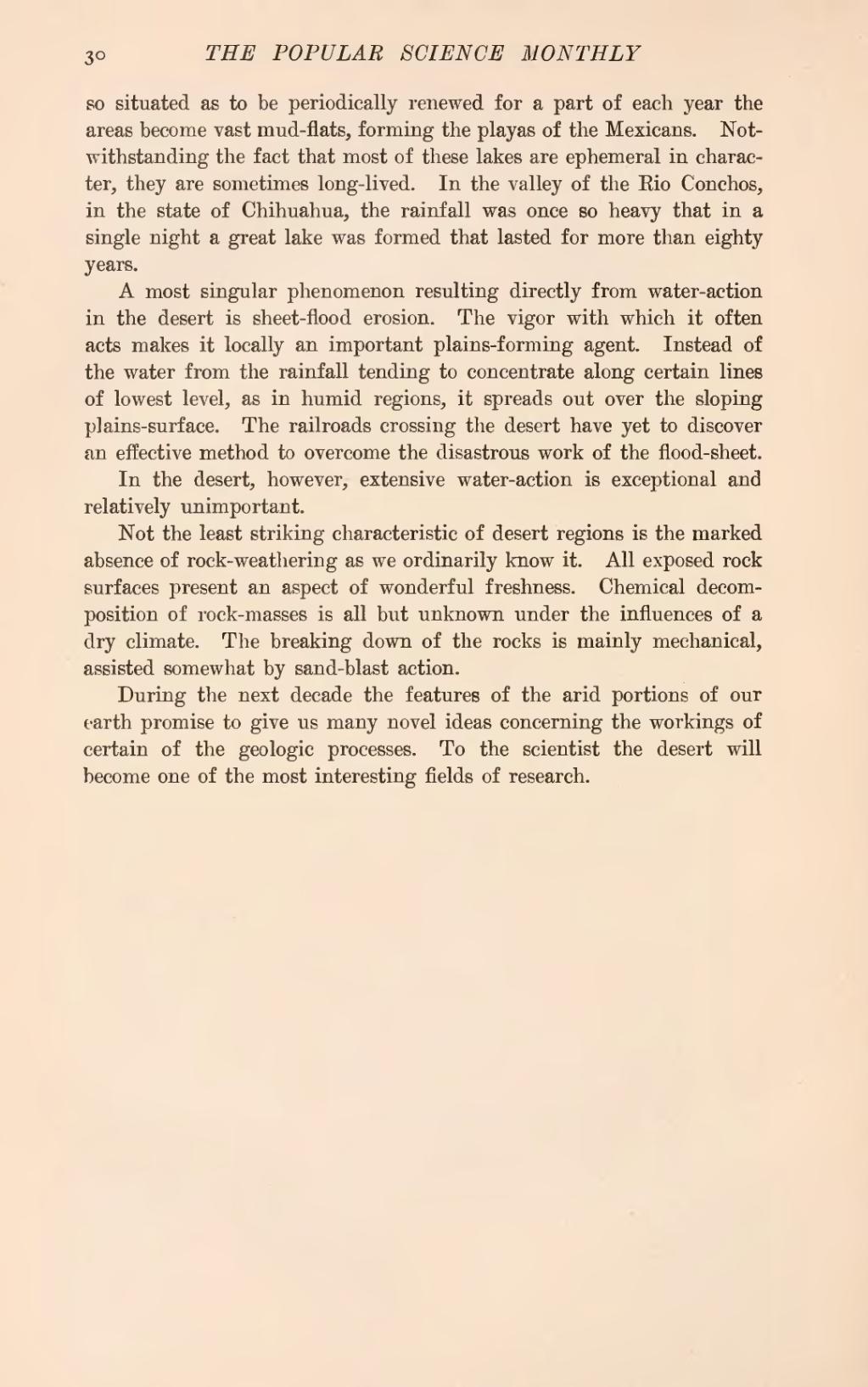so situated as to be periodically renewed for a part of each year the areas become vast mud-flats, forming the playas of the Mexicans. Notwithstanding the fact that most of these lakes are ephemeral in character, they are sometimes long-lived. In the valley of the Rio Conchos, in the state of Chihuahua, the rainfall was once so heavy that in a single night a great lake was formed that lasted for more than eighty years.
A most singular phenomenon resulting directly from water-action in the desert is sheet-flood erosion. The vigor with which it often acts makes it locally an important plains-forming agent. Instead of the water from the rainfall tending to concentrate along certain lines of lowest level, as in humid regions, it spreads out over the sloping plains-surface. The railroads crossing the desert have yet to discover an effective method to overcome the disastrous work of the flood-sheet.
In the desert, however, extensive water-action is exceptional and relatively unimportant.
Not the least striking characteristic of desert regions is the marked absence of rock-weathering as we ordinarily know it. All exposed rock surfaces present an aspect of wonderful freshness. Chemical decomposition of rock-masses is all but unknown under the influences of a dry climate. The breaking down of the rocks is mainly mechanical, assisted somewhat by sand-blast action.
During the next decade the features of the arid portions of our earth promise to give us many novel ideas concerning the workings of certain of the geologic processes. To the scientist the desert will become one of the most interesting fields of research.

